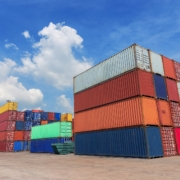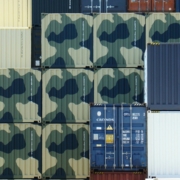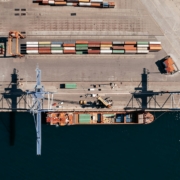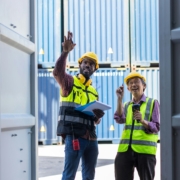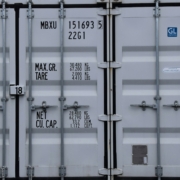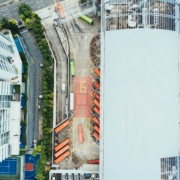Speed Up Deliveries: Strategies to Improve Your Delivery Times with Container Transport
When it comes to delivering goods fast, container transport offers many advantages. Shippers all over south-east Queensland are leveraging this method to enhance efficiency and cut down on delivery times. It combines the benefits of large-scale shipping with modern technology and strategic planning.
Choosing the most efficient routes is key. Using real-time data and advanced mapping technology allows for smart routes that avoid congestion. This not only saves time but also ensures a smoother ride for your cargo. Another tip is to streamline loading and unloading processes. With the right organisation and equipment, you can drastically reduce time spent at docks.
Good communication plays a major role too. Keeping everyone updated ensures that any potential hiccups are quickly resolved. Plus, using advanced containers equipped for tracking and monitoring can prevent delays. Being strategic in these areas helps in keeping the supply chain moving seamlessly, getting your goods to their destination on time.
Optimising Route Planning
Strategic route planning is essential for shortening travel time in container transport. Efficient route selection involves mapping out the journey in advance to avoid known obstacles and choosing the quickest paths. This planning is crucial in preventing unnecessary delays and ensuring timely deliveries, keeping customers satisfied and operations smooth.
Real-time traffic data plays a fundamental role in effective route planning. By analysing current traffic conditions, transport services can bypass congestion and accidents, picking alternative paths that save time. Access to live updates helps make informed decisions quickly, adapting to changes on the road as they occur.
Several tools and technologies assist in efficient route mapping:
– GPS navigation systems for accurate real-time location tracking
– Traffic management apps that provide current road conditions
– Route optimisation software that calculates the best routes based on various factors
These tools help streamline the transport process by reducing travel time and fuel consumption. The result is not just faster deliveries but also cost savings and improved operational efficiency.
Streamlining Loading and Unloading Processes
Reducing loading and unloading times is crucial for faster delivery cycles. Streamlined processes ensure that goods move swiftly from one stage to the next, reducing overall transit time. Quick loading and unloading also free up resources, allowing teams to handle more tasks within the same timeframe.
Here are some tips to speed up loading and unloading:
- Pre-plan loading sequences to minimise movement during loading and unloading
- Use equipment like forklifts to reduce manual handling
- Keep loading areas organised with clear paths
Best practices for organising cargo include placing frequently accessed items near the front for easy retrieval and balancing the load to prevent tipping. Proper organisation prevents delays caused by searching for items or rearranging cargo.
Trained staff and the right equipment can drastically improve efficiency. Workers familiar with the latest handling techniques perform tasks faster and with greater accuracy. Reliable equipment minimises breakdowns and downtime, keeping the flow of goods continuous.
By focusing on these processes, companies ensure that goods are moved quickly without compromising safety or quality, leading to improved service delivery and customer satisfaction.
Enhancing Communication and Coordination
Effective communication is crucial for improving delivery times in container transport. Keeping all stakeholders informed and involved can prevent misunderstandings, allowing operations to run smoothly. Clear communication opens channels for feedback, enabling faster problem-solving and adaptation to changes.
Status reports and real-time tracking are essential tools for coordination. These updates allow transport managers to provide accurate arrival times and foresee any potential delays. Such transparency builds trust with customers, who can plan around confirmed delivery windows.
Communication tools have taken a leap forward with advancements in technology. Mobile apps, cloud-based platforms, and instant messaging services keep everyone updated with the latest shipment information. These tools simplify processes and reduce manual errors, ensuring that all parties are aligned and working towards the same goal.
Utilising Advanced Container Solutions
Advanced container solutions play an important role in speeding up transport processes. Specialised containers, designed for different cargo types, protect goods better and streamline handling. Using the right container for specific goods reduces the likelihood of damage and ensures safety during transit.
Leveraging technology for container tracking and monitoring enhances efficiency. Smart containers equipped with GPS and sensors provide real-time data on location and condition, allowing for swift reactions to incidents. This proactive approach ensures timely delivery and helps maintain the quality of the goods throughout the journey.
Innovations in container design contribute to faster and more reliable transport methods. Features like easy-access doors, adjustable shelving, and improved stacking capabilities make the loading and unloading process more efficient. These advancements minimise idle time and speed up transit, making operations more effective and reducing costs.
Conclusion
Focusing on communication, coordination, and advanced container solutions can greatly enhance delivery times. Clear communication ensures all stakeholders are informed and aligned, paving the way for efficient operations. Meanwhile, smart technology and specialised containers offer innovative solutions to traditional challenges, improving both speed and reliability.
Trust DNV Transport to elevate your delivery processes. By implementing cutting-edge solutions and maintaining effective communication, we are committed to providing the best service in south-east Queensland. Contact us today to discover how our advanced shipping container transport in Brisbane can boost your transport efficiency and ensure your shipments arrive safely and on time.


